I don't know about them before
9 Things From Different Countries That Are Worth Incorporating Into Your Life
We live in a big world, with a myriad of cultures and habits we may find a little strange at first. For instance, in Iceland, Christmas Eve is all about exchanging books and spent reading in a cozy nook with some chocolate. While we all love an iced drink to cool off from the heat in the summer, in some Asian countries, water is nearly always had hot, never mind the weather. The thing is, a lot of these habits have solid scientific backing.
Bright Side dug up some interesting cultural practices from across the world that can be easily adopted by all, for reasons involving health and happiness.
1. The Japanese believe in “onsen” for health.

People in Japan tend to live longer and healthier lives, and researchers feel that the one thing that adds to their longevity is their habit of taking warm baths. Japan is home to many natural hot water springs, and there are many hotels and spas that are home to “onsens,” as in natural, hot, spring-fed baths.
For those who do not live in these areas, hot water baths at home are the norm and experts feel these improve blood circulation and improve general health.
2. In Asia, outside shoes are not worn in the house.

In most Asian countries like India, Japan, and even some European countries like the Netherlands, outside shoes are left outside the door. The idea is to not bring outside germs and dirt inside the house, where younger children or even pets could pick up an infection.
It may be pooh-poohed away like an old habit, but there is scientific proof behind it. Some homes may even have cupboards placed in an outer room or doorway to keep the outside shoes in.
3. In India, yogurt is eaten plain or savory.
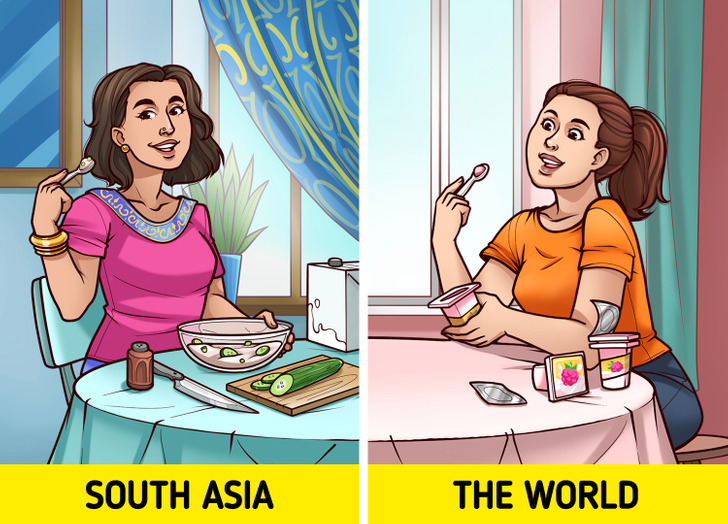
Most of the world loves its sweet yogurt, with various fruity and sugar-loaded flavors. While yogurt is healthy, having too much sugar is basically an unhealthy habit and while it’s okay to choose plain or Greek yogurt, it’s also a good idea to have it plain, or even savory.
For instance in India, and other South Asian countries, yogurt is turned into a savory side dish called “raita.” It’s whipped smooth, thinned down with a little water, and spiced up with salt and other spices. You can choose to add finely chopped cucumber, tomato, and onions to it, or even boiled bottle gourd. You can also have it crunchy with little fried flour balls called “boondi.”
4. Italians have multi-generational gatherings.
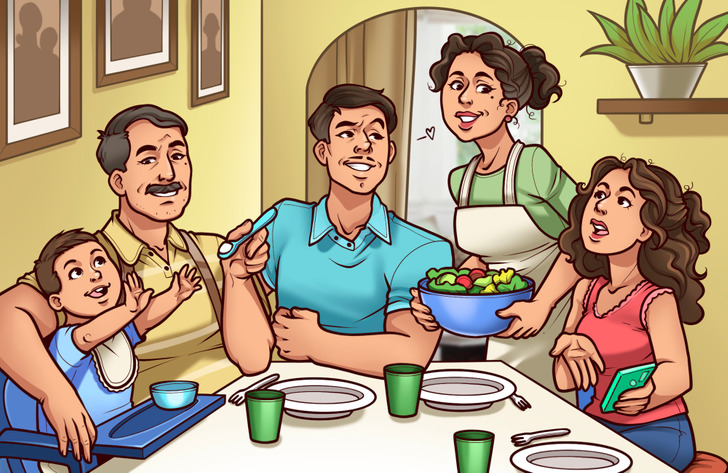
There are many gatherings in countries where there is an age or even gender divide when it comes to formal seatings. There are usually child-specific tables in many formal settings, but the Italians tend to do things differently. In the Italian culture, gatherings and celebrations are multi-generational and everyone is free to mingle with each other.
5. Asians believe in an annual cleaning of homes.
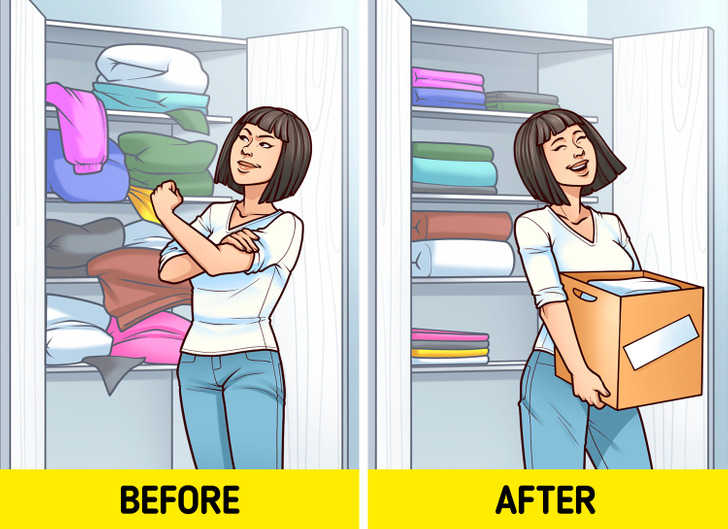
We all clean out a cluttered desk, or an overflowing closet when things get too untidy. But in Japan, there’s a practice called “Osouji,” an annual cleaning of the home to prepare for the New Year. The house is cleaned, top to bottom, and purified to welcome the New Year with cleanliness.
A similar practice happens in India, during the festival of Diwali, where homes are cleaned, and any unused stuff is marked for donations.
6. Drains on bathroom floors offer convenience.
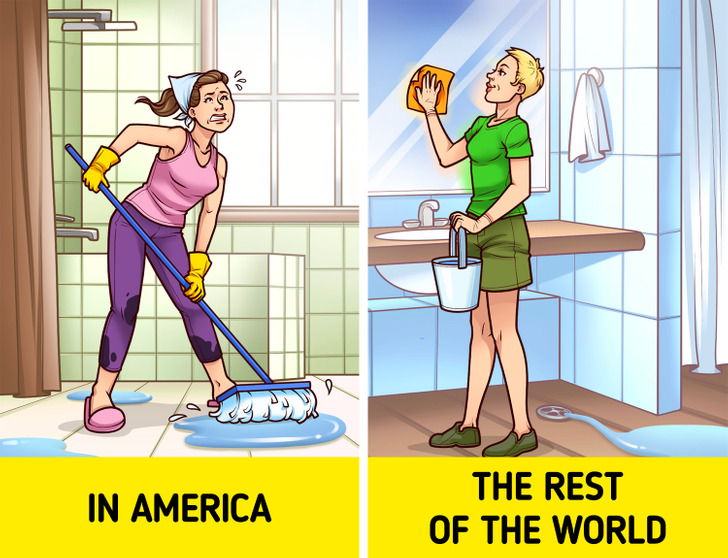
Most American bathrooms do not have a floor drain, other than the drain hole in the bathtub. This keeps the bathroom dry, of course, but it also becomes a bit of an inconvenience if you want to simply scrub the bathroom down. It’s usually a good idea to have a drain hole in one corner, to handle spills better and to help clean the bathroom too.
7. Danes and Norwegians practice Hygge: a cozy home.

The Danish and Norwegians know how to make a cozy home, and this concept is called Hygge (pronounced as hoo-ga). The idea is to make a home as comfortable and inviting as it can be, creating little corners you want to sink in, and just enjoy the space you call home.
8. Asians prefer hygiene with handheld bidets.
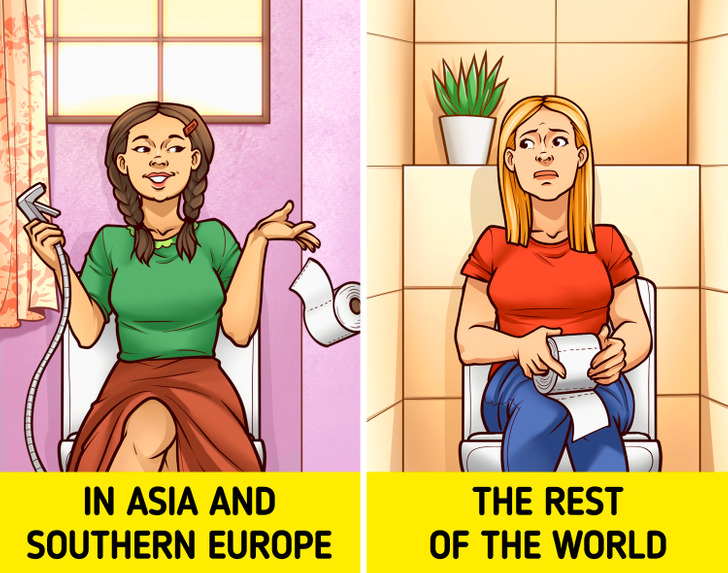
The war between paper and water is endless when it comes to the toilet but experts say that a bidet, also called a health faucet, has its health benefits. You will spot them in the bathrooms of most Asians and Southern Europeans.
Using water to clean after you use the toilet can aid in better hygiene than paper, although you can always use paper after to soak up the moisture. Plus, less paper is better for the environment.
9. The Arabic habit of light lunches is refreshing.
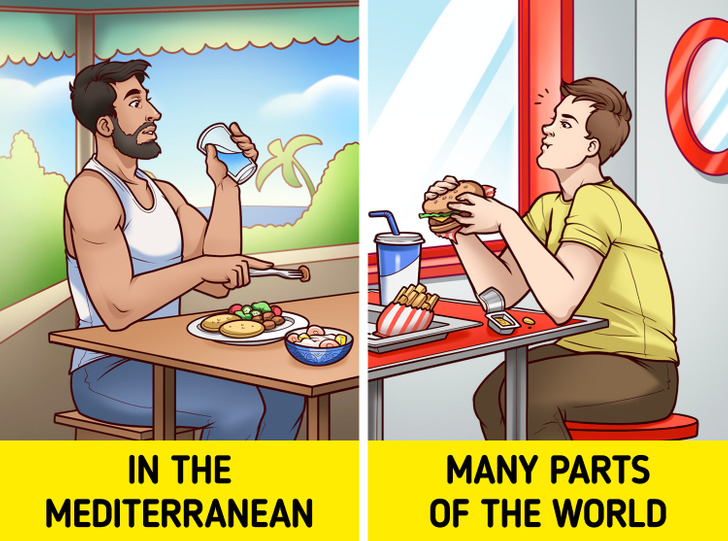
A heavy lunch often leads to post-lunch lethargy, which can be pretty deadly for concentration in the workplace, especially if you already suffer from an afternoon slump. A busy lifestyle can also mean a quickly wolfed-down lunch, often fast-food-related, adding to weight and health woes.
People in the Middle East often make an interesting lunch that is full of protein with smoked meats, chickpeas, and beans, and kept light with the aid of whole-wheat flatbreads as well as lots of salads. Given the high temperatures in the Middle East, a light lunch keeps you fresh, and a post-lunch coffee awakens any snoozing brain cells.
Which habit from another culture had you bowled over enough to adopt it? Do you have something similar to offer from your side of the world? Share your healthy and heartwarming tips and tricks with us.
Comments
I'm from Italy, we use bidet to clean ourself after the toilet but first we wipe!! First toilet paper and than water. Not just water. And we use liquid soap.
cool
5 in Chinese is called 大扫除。basically is cleaning up the house and throwing away things that are old or broken or spoiled to 'throw away' s the past year's bad luck and welcome the new year. I like 红包s (ANG BAO)